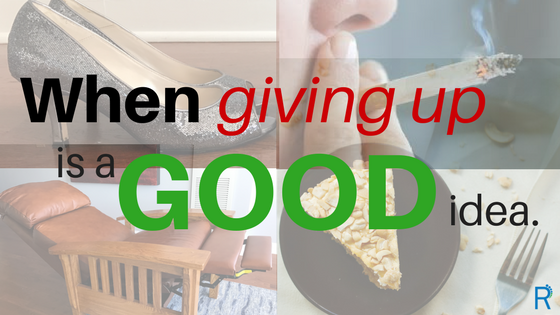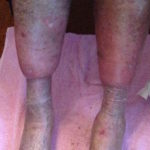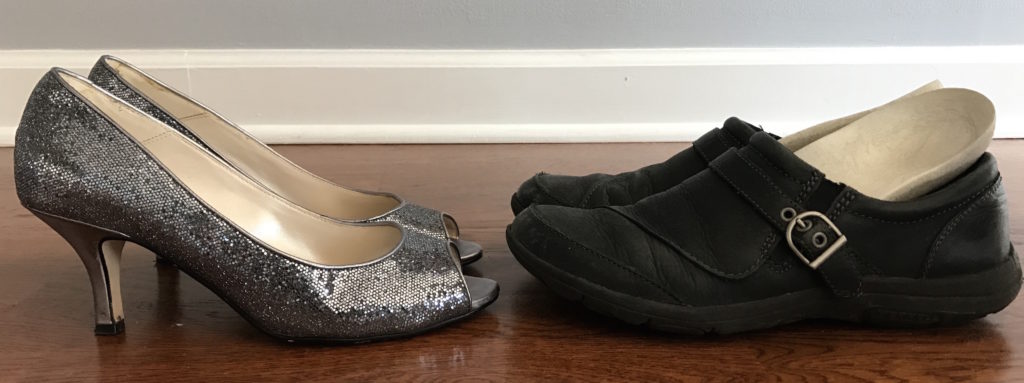When Giving Up is a GOOD Idea

Could giving up be a good idea?
We will all encounter times that require us to give up some habits, freedoms, or modes of taking care of our normal routines due to some speed bump or major roadblock that life throws our way. It’s often how we respond and how we make adjustments to these changes that determine how quickly we can get past these times.
A wound that brings you into the wound clinic can be one of those life-altering interruptions. You may have been trying to heal it on your own and it’s either not going anywhere or getting worse. Perhaps there are factors in your daily routine that are sabotaging your efforts to heal it, but are simple things that we can do to change up the course of healing! There are inevitably things that we MUST do to get on the road to healing. Initially we might see these as restrictions or something that we are giving up, but when looking at the consequences, giving up certain habits or norms can allow you to progress towards healing.
Common Things that are Tough to Overcome for Stubborn Wounds
Which shoes would you rather wear (or see your date wear) to that special occasion?
But would just one night….or even just a few hours make that much of a difference??
The answer is a resounding YES!
The beautiful shoe can lead to an ugly result:

I once had a patient who had no idea her foot was damaged until she got into the bathtub and saw blood in the water. She then investigated and found a badly blistered foot from her new fancy shoes. It is a good idea to give up the fashionable shoes in order to gain healthy feet!


Here is an example of what pressure occurs from a recliner: OUCH!

In the same way, one has to sometimes choose between a regular bed and a specialty bed with pressure redistribution. While you may feel your regular mattress is very comfortable, there are very fe

Medicare (and most insurances follow medicare guidelines) will cover specialty mattresses or overlays if you have a wound. The coverage for what type of mattress is based on the location
Even though it can be a challenge to rearrange a room for a hospital bed and its specialized mattress, it is essential for healing pressure ulcers.
Pressure ulcers DEMAND giving up “regular” surfaces to move toward comfort and healing.
Everyday Things That Could Affect Our Healing Ability
Sometimes our daily routine can sabotage our recovery. Our skin’s health and ability to heal a wound is greatly affected by things we don’t even consider.
Nutrition: ma

6-8. While it is highly recommended to not smoke at all, ceasing from smoking while trying to get a wound closed will surely improve any healing capabilities. The correlation is well documented.
“Giving up smoking is the easiest thing in the world. I know because I’ve done it thousands of time” ~Mark Twain
Being sedentary: “Sitting is the new smoking” announce the headlines, calling attention to the increased risks associated with a sedentary lifestyle (phrase coined by Dr. James Levine from the Mayo Clinic-Arizona State University). These photos call attention to two main areas affected by prolonged sitting. First of all, there is increased pressure on both the buttocks and the feet, depending on which position is chosen. This is a photo of a beginning pressure ulcer on the h

Secondly, gravity takes over, allowing lower legs to swell. When there is little muscle activity and no elevation or compression, legs will swell. These feet are not swollen due to tight socks. But these legs are headed for trouble with the overload of fluid.
Independence: Even though we may be able to do something under our own power, it may be a wiser decision to allow someone else to care for our wounds. We’ve all met many people who have significant disabilities who are VERY independent with their daily tasks and caring for their various obstacles they encounter every day. That’s wonderful! Many have had wounds come and go throughout the time of their disability, and they have always managed their own issues. But as the body ages and the toll of time deteriorates one’s health, it may require new or unfamiliar ways to address what used to heal easily. By giving up trying to handle it all on your own, you may gain the ability to overcome your stubborn wound. So see your local wound clinician and allow someone who is qualified to decide what intervention is necessary or recommended. Allow a friend or family member or clinic to assist with changing the dressings. There is nothing wrong with striving for independence, but when one’s independence prevents progress, it becomes detrimental to one’s health. Try giving up a bit of control to gain ground against that stubborn wound.
Some right now are in the midst of observing the season of Lent, when it is a common practice to give something up for a 40 day period to lead to better focus on spiritual growth and formation. In the same manner, it is a good thing to sometimes sacrifice the things that are holding back our physical health and healing to get back on the right path. So look at your feet, your bed, chair, your habits, and the strength of your own grip. Getting any good ideas on what to give up?
This blog post was written by Robin Carlson, PT CWS
What is PT CWS? Physical Therapist and Certified Wound Specialist




